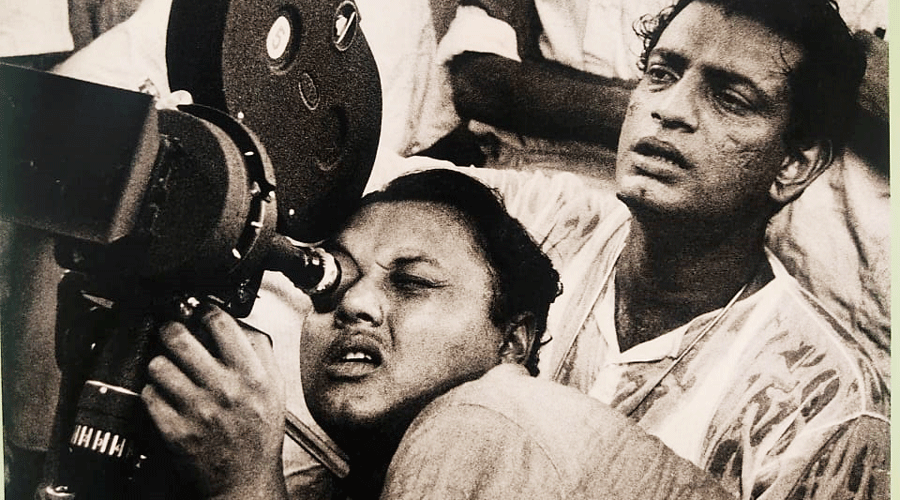An enlarged contact sheet of photographer Marc Riboud shows Satyajit Ray drenched in sweat as he shoots a train scene for Aparajito.
It was probably the scene where Apu takes the train to Kolkata then Calcutta. Or was it that lilting sequence where Sarbajaya, with a smile on her lips, returns to Nischindapur with the familiar Pather Panchali background score? What Riboud’s lens captures is the absolute immersion of Ray in his filmmaking.
Such images and others show the city and its people through the lens of French photographers in the exhibition titled Convergence: A Panorama of Photography’s French Connections in India, which is on at the Indian Museum till December 7.
Organised as the fourth edition of Bonjour India, a pan-India festival for the arts, the exhibition celebrates the 195th anniversary of photography and the 75th anniversary of India’s Independence.
Photographs of Louis-Theophile Marie Rousselet, a French traveller during the 1860s who met India’s first photographer king Sawai Ram Singh II; Marc Ribound, who worked for Paris-based Magnum and Photos from 1953-78 along with Denis Brihant; Paul Almasy; Edward Miller and Bernard Pierre Wolff, among others, engage visitors depicting urban street life, Indian women from all classes and backgrounds, festivals, Kumartuli, the Howrah bridge, Pandit Ravi Shankar and Nehru, among others.
The exhibition also has frames by French surgeon-turned-photographer Jean Baptiste Oscar Mallitte who travelled from Bordeux to stay in the city for several years.
During his visit to Calcutta in the 1950s, Riboud met Ray and noted: “Ray was the rarest of the rare, the last of the master auteurs of cinema. Essentially, his was a visual, uncluttered mind… in sharp contrast to the abstractions and contrived intellectualism which we find among filmmakers all over the world today. The eye is meant to see, not to think….”
During his trip to India, Riboud (encouraged by his mentor and close friend Henri Cartier-Bresson), took portraits of several leading cultural figures in India, including Ray and musician Ravi Shankar. He also extensively shot India’s urban street life and architecture in cities such as Calcutta, Chandigarh and old Delhi.
Says curator Rahaab Allana: “Riboud infused both poetic appeal and lyricism into the frames. He overlaps in timeline with various known photographers in India such as Homai Vyarawalla, whose images are also on display.”
Riboud’s series on Kumartuli captures unfinished idols of Kali with the surrounding paraphernalia, a potbellied sleeping man, a girl dangling her legs from the platform of the deity, and straw skeletons of demons that accompany the deity.
